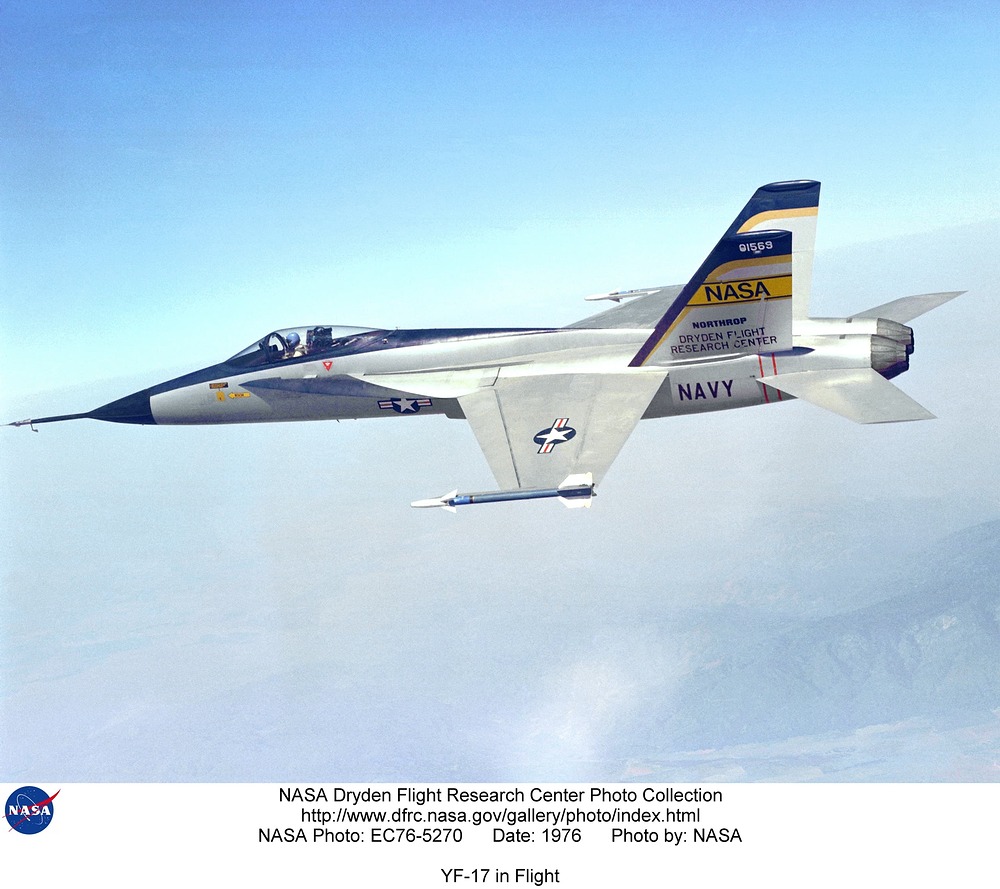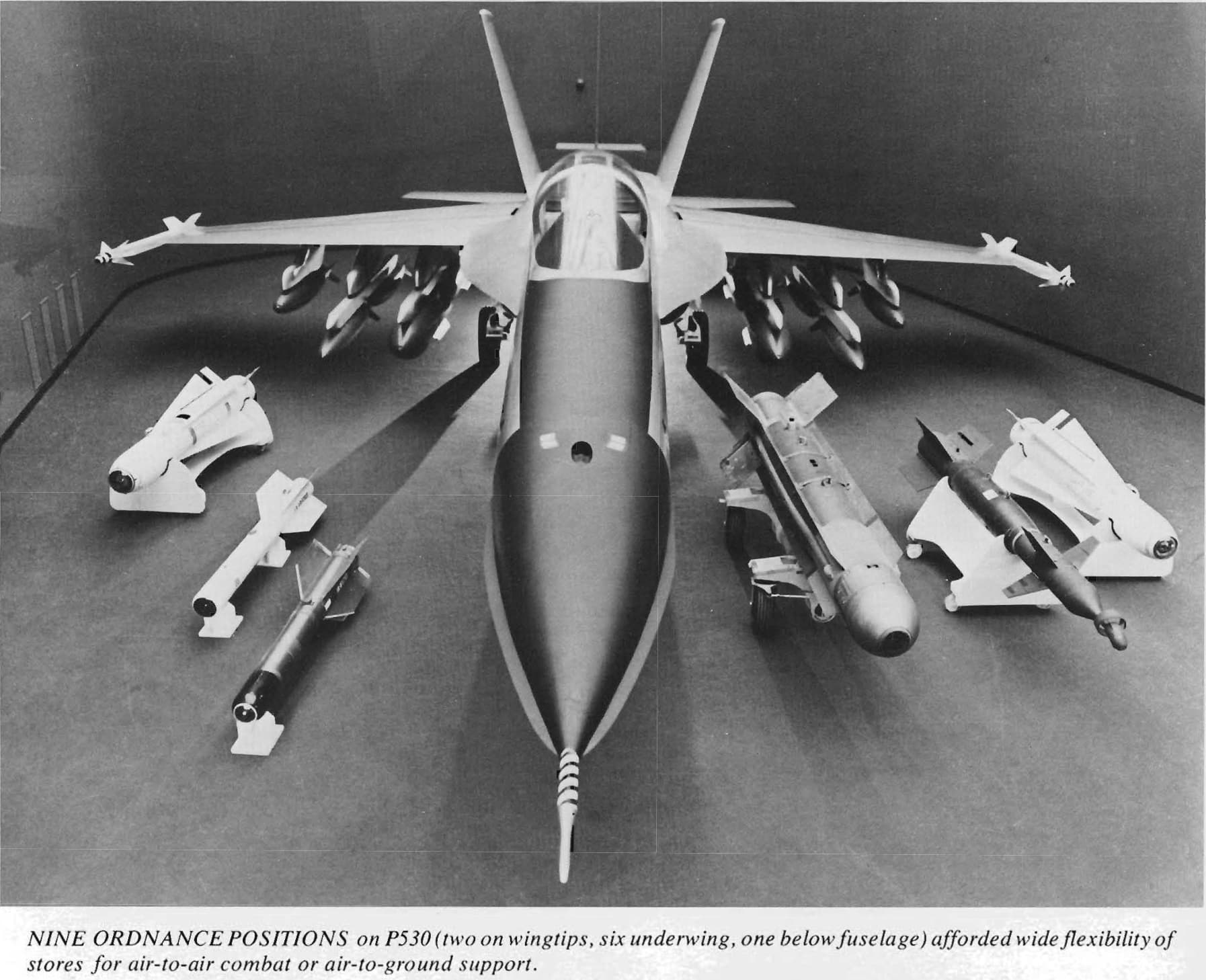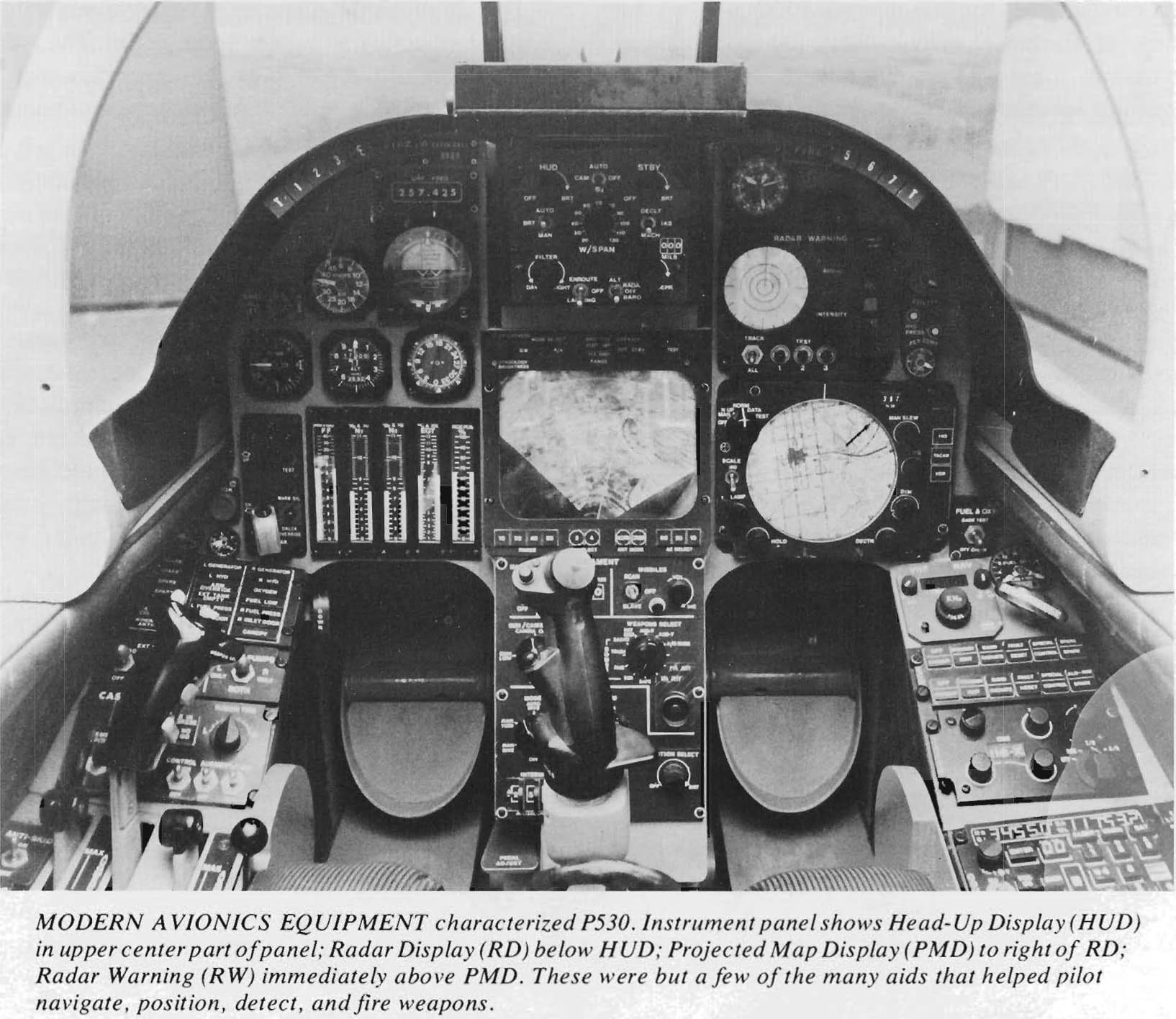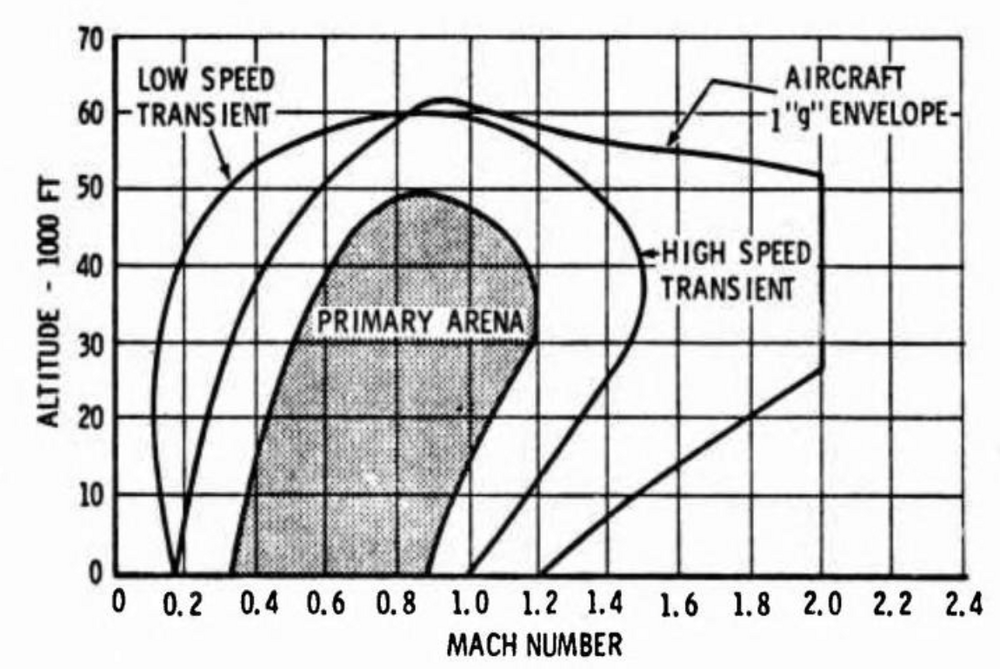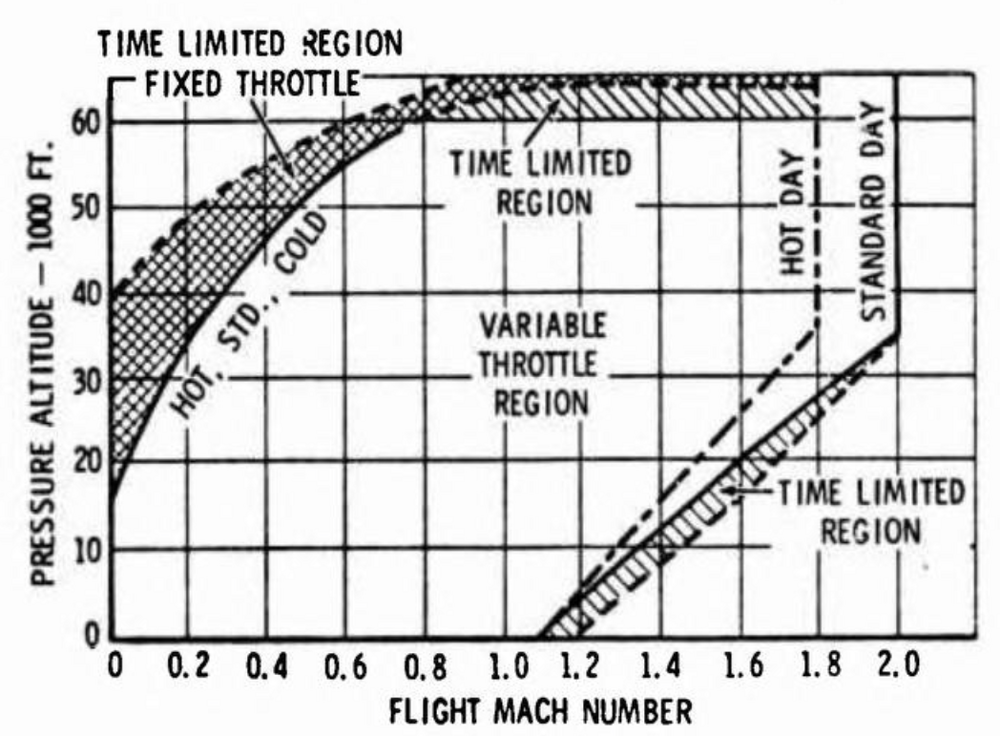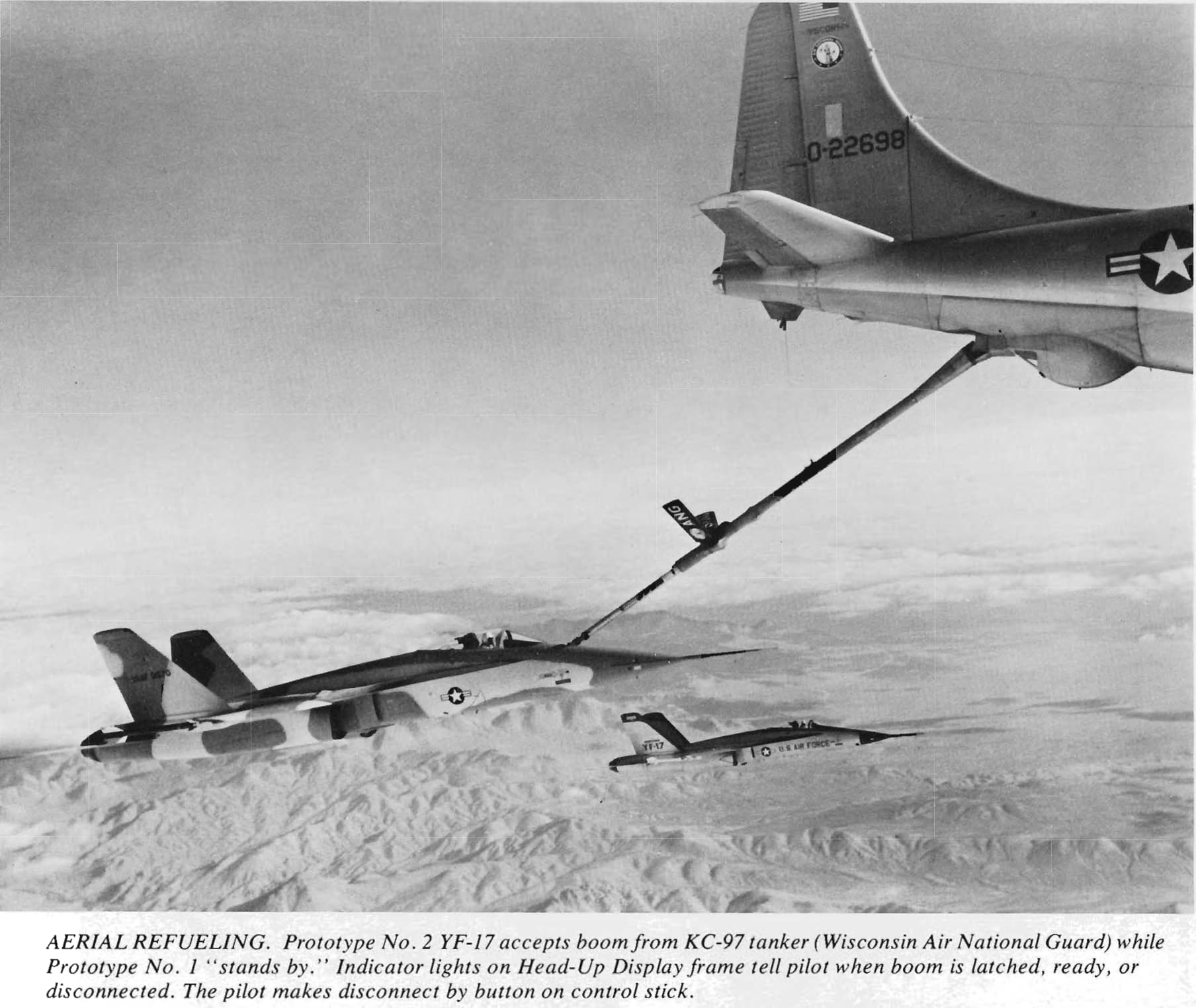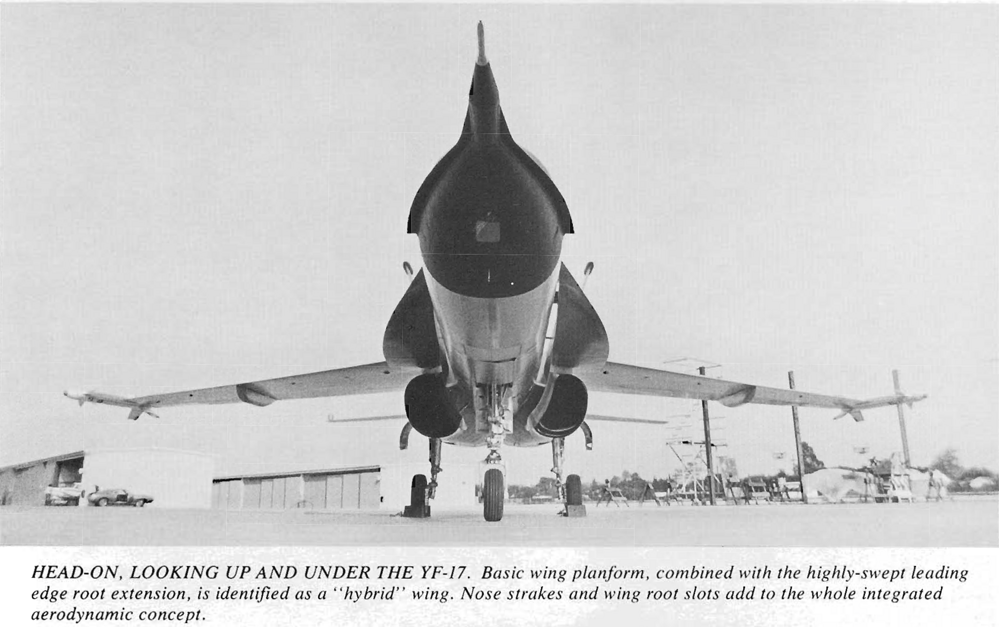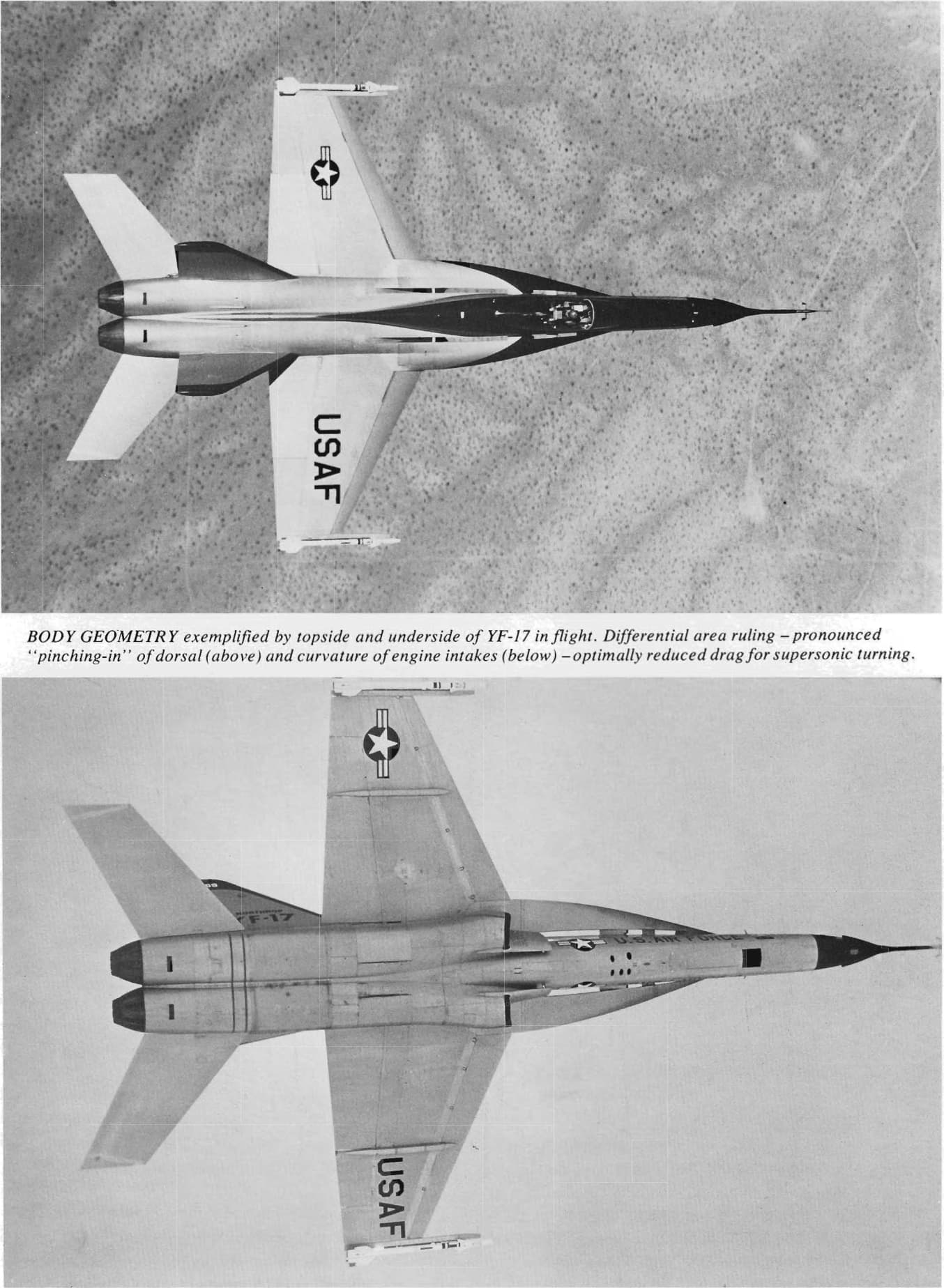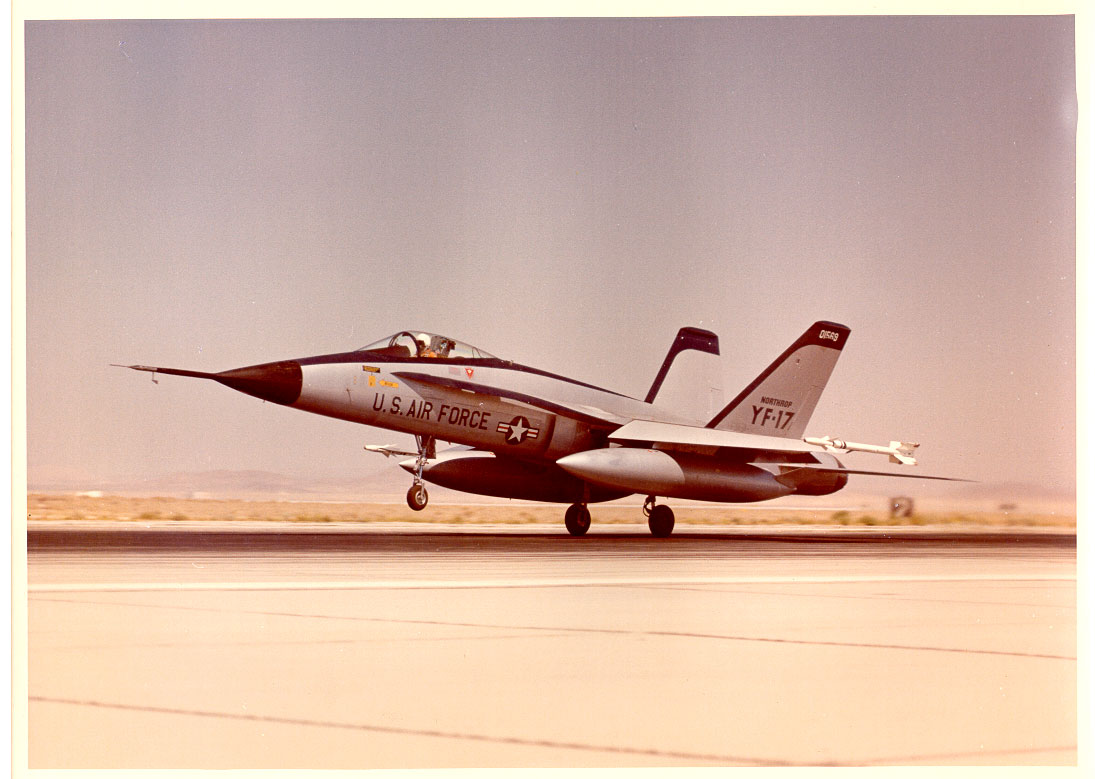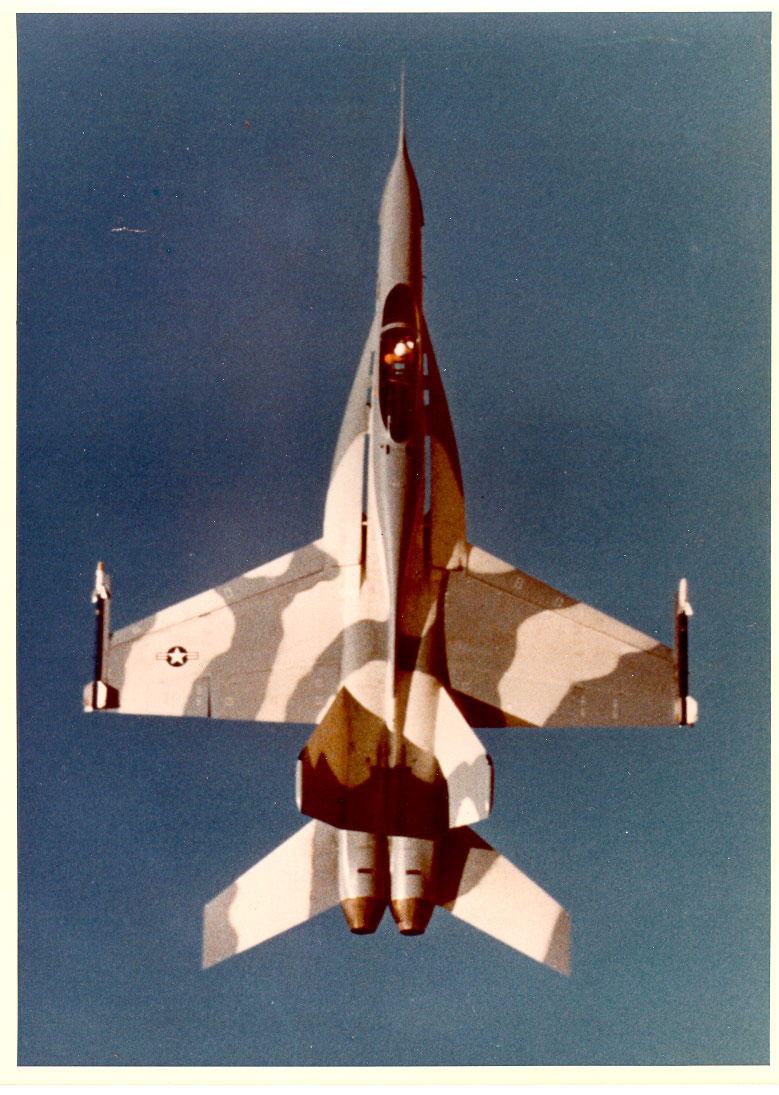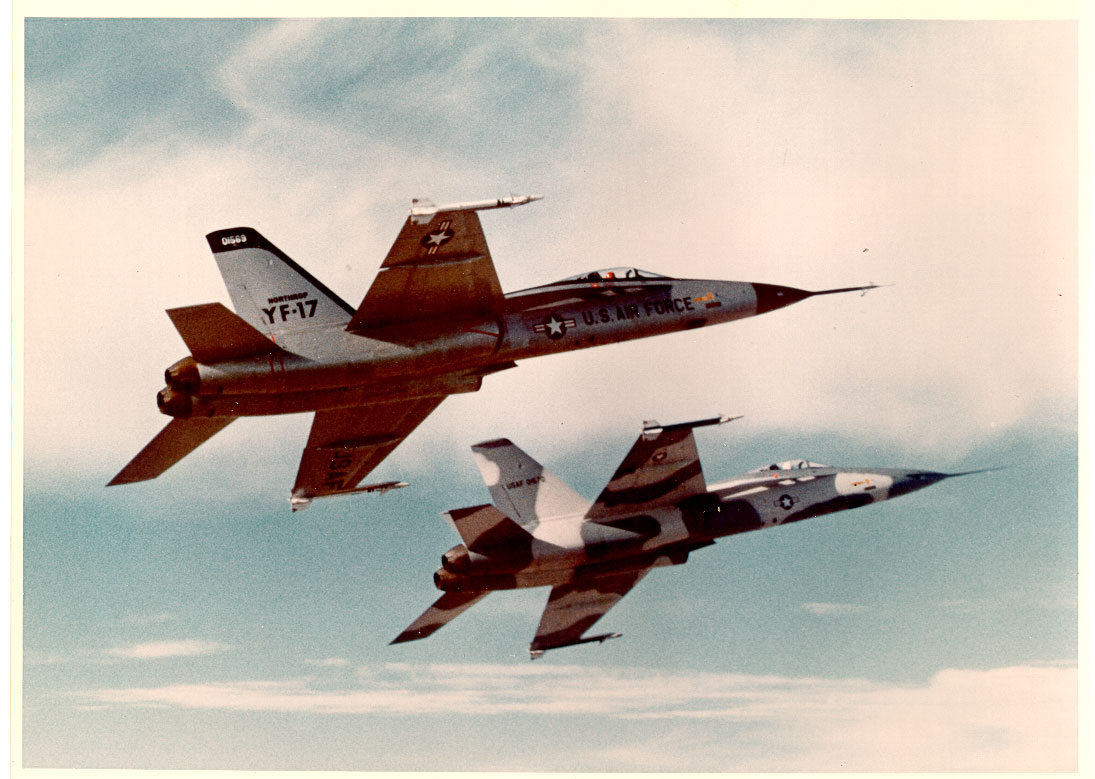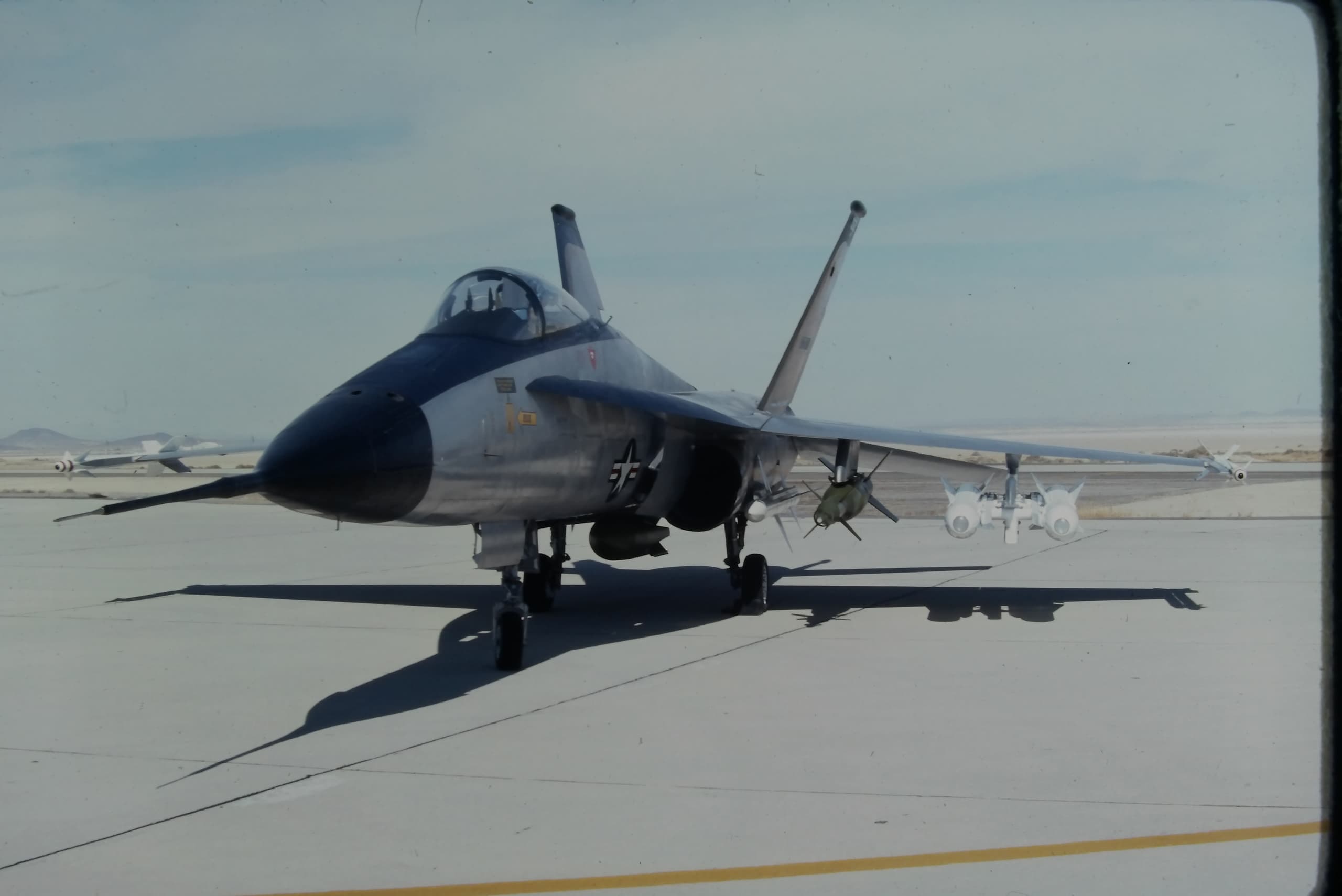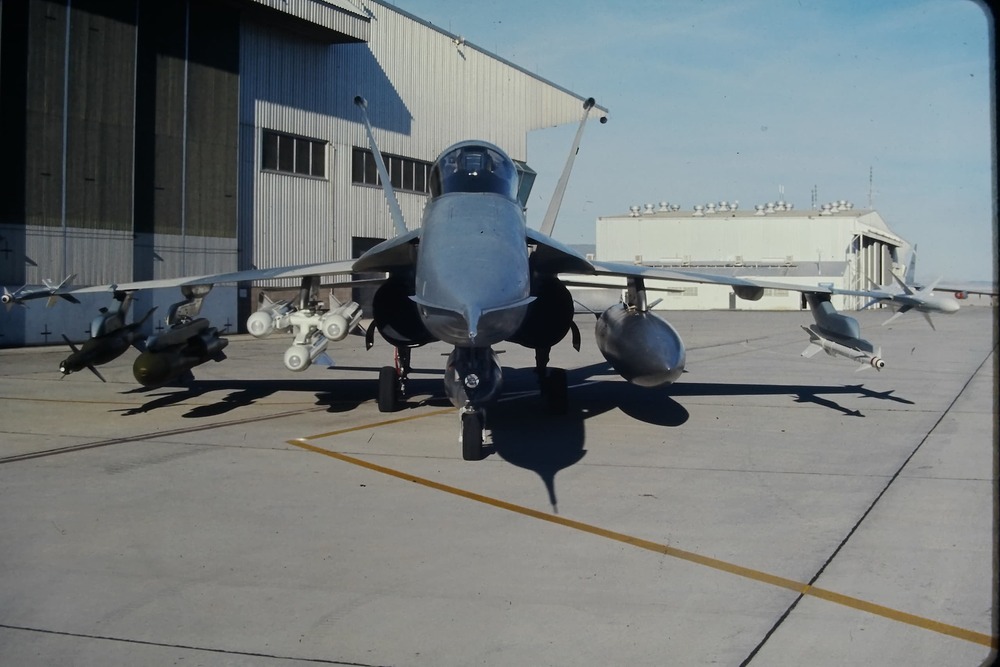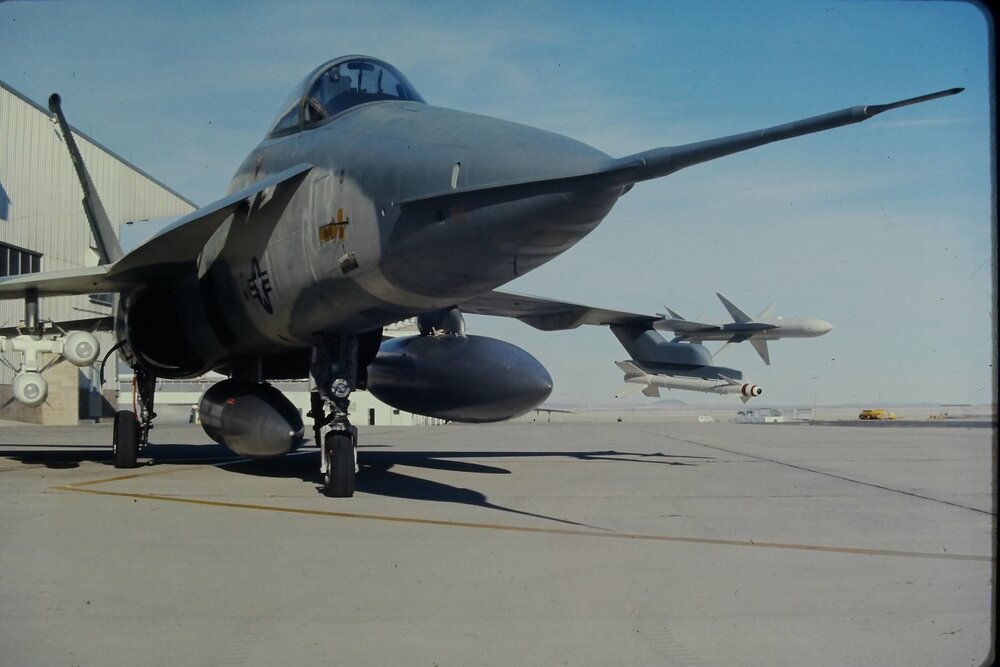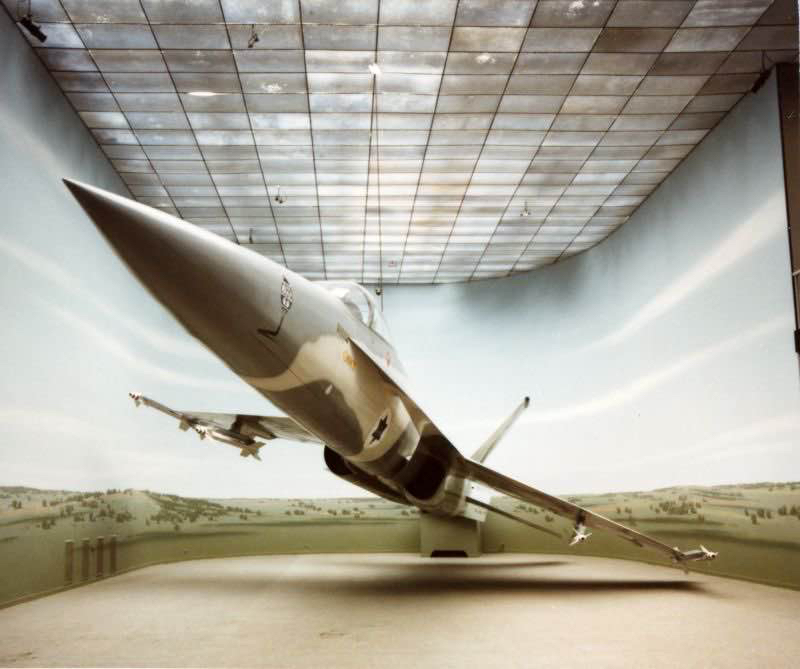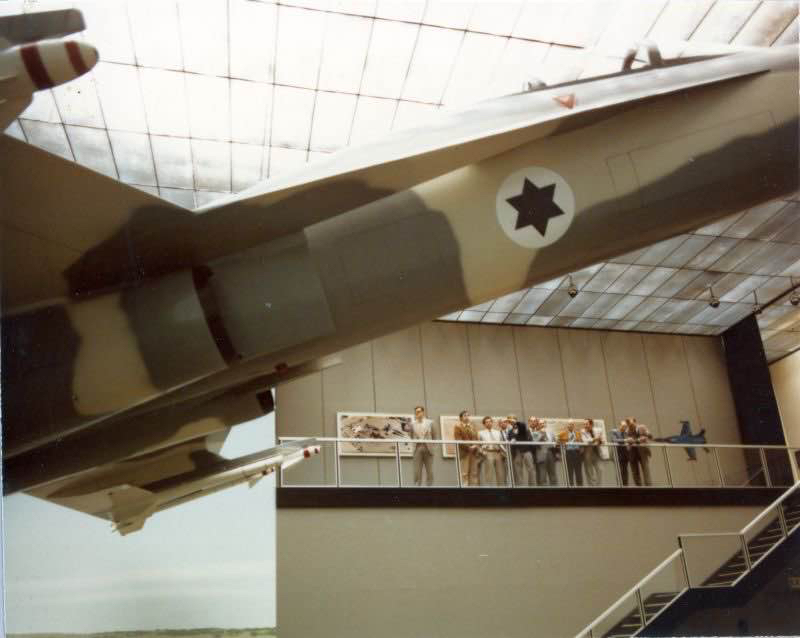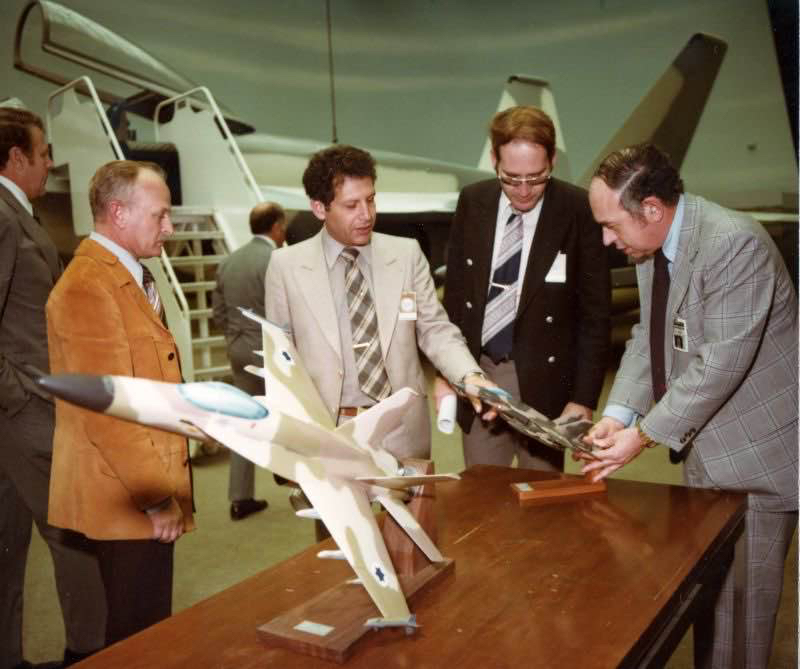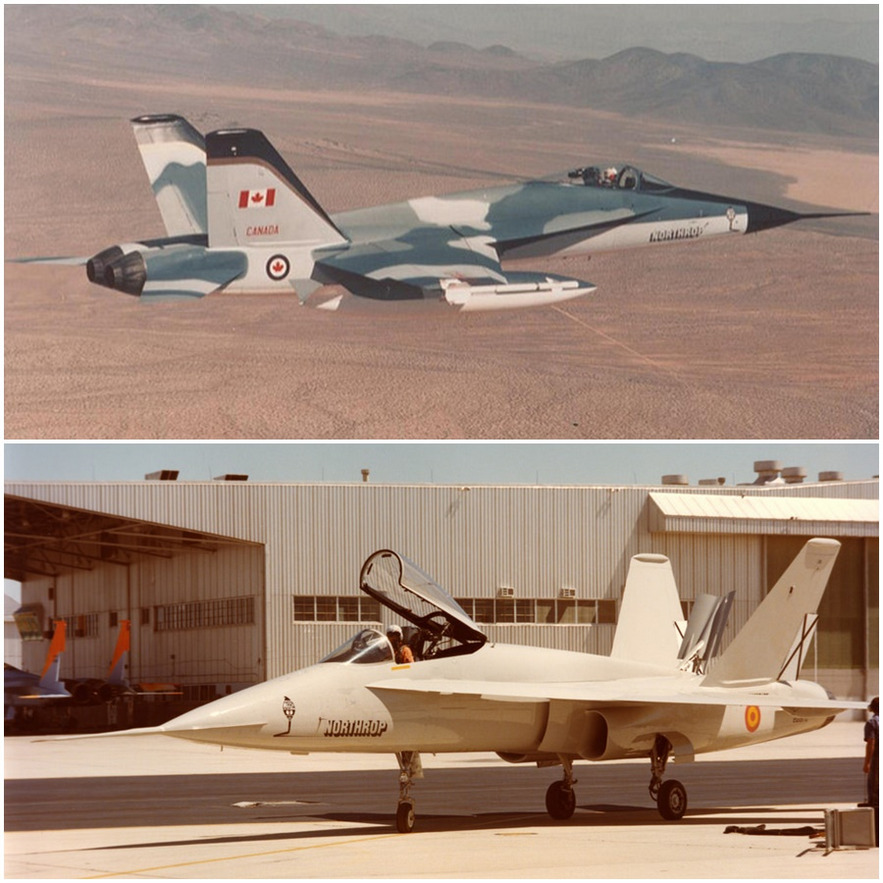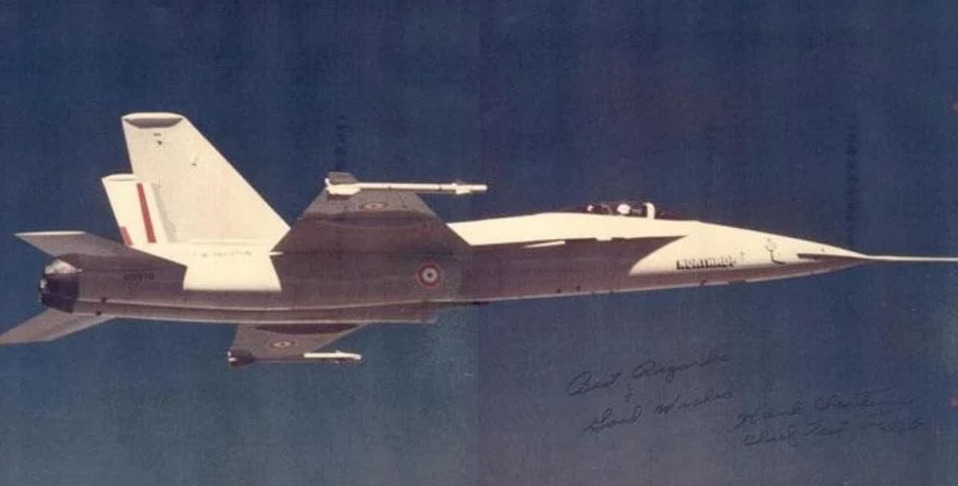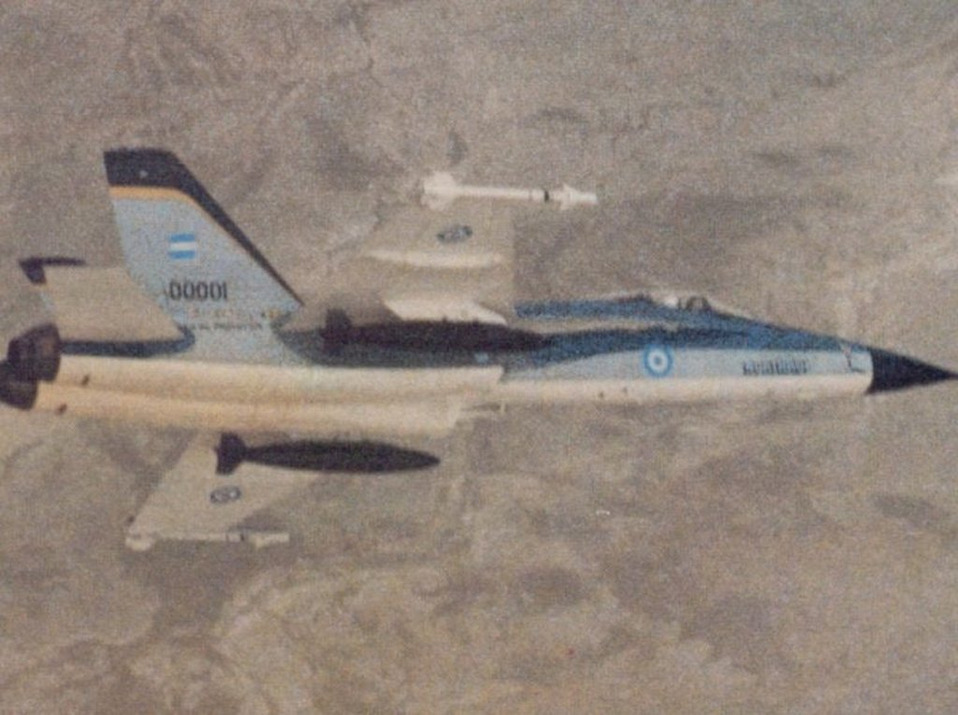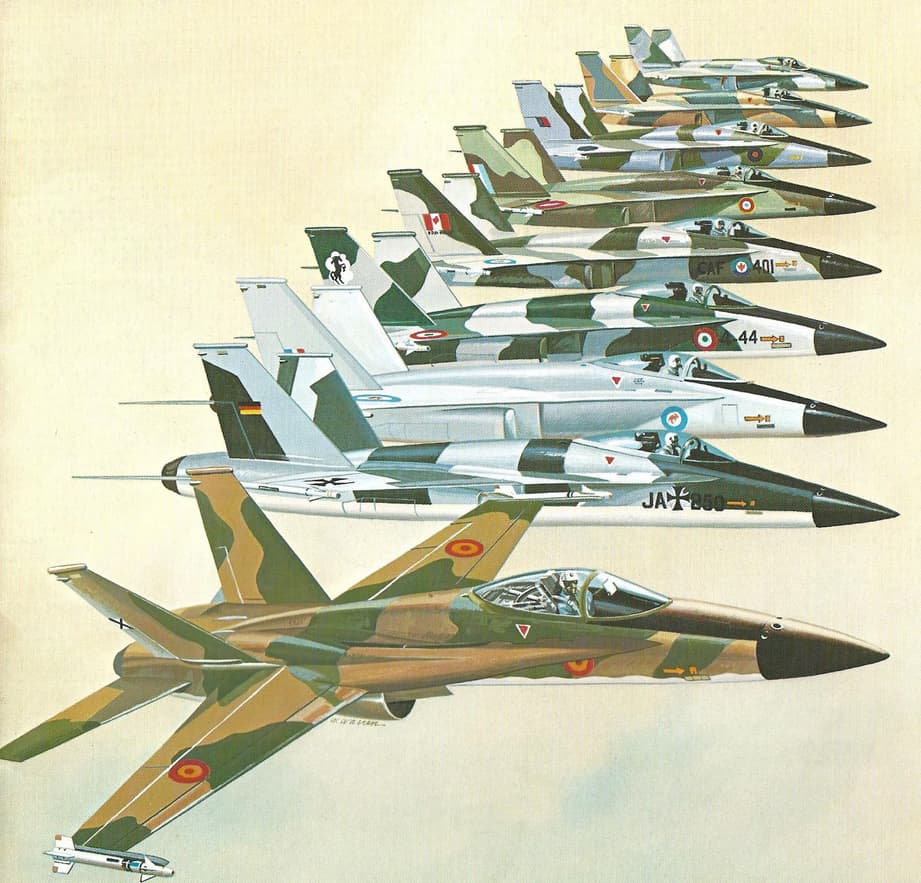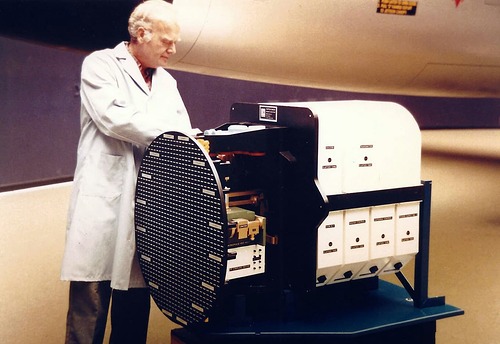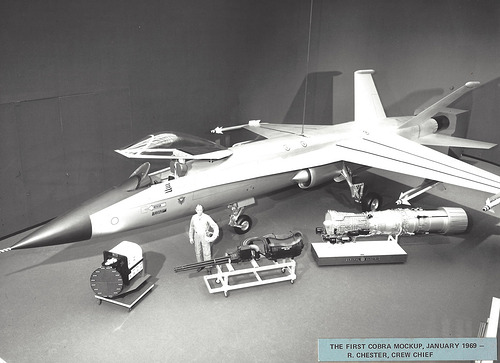- Yes
- No
YF-17 during a 1976 flight research program at NASA’s Dryden Flight Research Center, Edwards, California (source: https://www.dfrc.nasa.gov/Gallery/Photo/YF-17/HTML/EC76-5270.html)
“When our designers said that in the YF-17 they were going to give the airplane back to the pilot, they meant it. It’s a fighter pilot’s fighter.”
— Henry “Hank” Chouteau, Northrop Chief Test Pilot, after the YF-17’s first flight
TL;DR: smaller, lighter hornet but with only Sidewinders.
The Northrop YF-17 Cobra was a prototype light fighter developed for the US Air Force. As a participant in the Lightweight Fighter program, it embodied the Fighter Mafia’s vision for a cheap, agile dogfighter, with minimal avionics but highly manoeuvrable. Although beaten by the YF-16 in the LWF/ACF program, it found favour with the US Navy and was developed into the F/A-18.
The YF-17 can essentially be seen as a miniaturised F/A-18. Its dimensions are smaller, and its weight is lighter due to the absence of complex avionics and structural strengthening for carrier operations, which means that despite the slightly less powerful engines the Cobra has a higher T/W ratio. Manoeuvrability is excellent thanks to large LERXs and automatically controlled leading- and trailing-edge flaps (which the Hornet inherited). Armament is lacking, however, being equipped with just a M61 Vulcan, two Sidewinders on the wingtips, and two dumb bombs (in that aspect, it’s more aptly described as an enlarged F-5).
History
The YF-17 originates from Northrop’s internal projects to further develop the F-5 in 1965. The first design was the N-300, a stretched F-5 powered by two General Electric J1A1 engines. The program designation was changed to P530 in 1967 and the design was eventually finalised and patented in 1970. It was meant to be a multirole aircraft, utilising highly advanced avionics and carrying a wide range of payloads, as the images of the aircraft and cockpit mockups below show. In a sense, the P530 was more similar to the F/A-18 than the YF-17! Northrop attempted to partner with European nations to produce the P530, but no one showed any interest.
Source: “Northrop: An Aeronautical History” by Fred Anderson
Then the Fighter Mafia came along. Dissatisfied with the F-X program and the F-15, they managed to obtain funds for a “Study to Validate the Integration of Advanced Energy-Maneuverability Theory with Trade-Off Analysis”, in which they asked General Dynamics and Northrop to develop a fighter that embodied their visions. Their initiative was eventually supported by the Department of Defense and the US Air Force with the Lightweight Fighter program (which would be followed by the Air Combat Fighter program for the production aircraft). A Request for Proposal was issued in 1971/1972, and Northrop immediately realised that their P530 design could be adapted to the new program.
The YF-17 made its first flight on 9 June 1974 with Northrop Chief Test Pilot Henry “Hank” Chouteau at the controls. The flight lasted 61 minutes and reached 610 mph (982 km/h) at an altitude of 18,000 feet (5486 m). After the flight, Chouteau remarked: “When our designers said that in the YF-17 they were going to give the airplane back to the pilot, they meant it. It’s a fighter pilot’s fighter.” Two days later, on 11 June, Chouteau flew the YF-17 to Mach 1 without afterburner at 30,000 feet. The first flight of the second prototype was on 21 August 1974. The test flight program proceeded quickly and smoothly. Upon completion in January 1975, 288 flights and 330 hours of flight time had been accumulated. The Air Force ultimately chose its competitor, the YF-16, for further development, saying that the YF-16 had advantages in agility, acceleration, turn rate, and endurance over the YF-17, and possibly because the YF-16 used the same engine as the F-15, lowering engine development costs for both programs. However, the Navy favoured the YF-17 due to its twin-engine design which was considered safer for sea operations and its multirole capability. Consequently, Northrop and McDonnell Douglas developed the YF-17 into the F/A-18 Hornet.
Design and specifications
General characteristics:
- Crew: 1
- Length: 55 ft 6 in (16.92 m)
- Wingspan: 35 ft (10.67 m)
- Height: 14 ft 6 in (4.42 m)
- Weight:
- Empty: 17,390 lb (7,888 kg)
- Gross (full internal fuel, cannon ammo, missiles): 24,760 lb (11,231 kg)
- Maximum: 34,430 lb (15,617 kg)
- Fuel capacity: 6,400 lb (2903 kg)
- Wing area: 350 square feet (33 m²)
- Engine: 2x General Electric YJ101 turbojet, afterburning thrust 15,000 lbf (67 kN) (static, uninstalled) (some sources claim a 14,400 lbf (64 kN) thrust, unspecified whether this is installed thrust)
Performance:
- Max speed: 1,320 mph (2,120 km/h, 1,150 kn) at 40,000 feet (12,000 m)
- Maximum mach: 1.95
- Climb rate: 50,000 ft/min (250 m/s)
- Service ceiling: 60,000 ft (18,000 m)
- Combat radius: 500 nmi (576 mi; 927 km)
- Ferry range: 2,400 nmi (2,800 mi; 4,500 km)
Avionics and armament:
- Flight control: mechanical with control augmentation system (automatic leading- and trailing-flap deployment based on AoA)
- Radar: X-band, range and closing rate measurement, 6,000 ft (1829 m) range, ±10˚ azimuth and +6˚ to -20˚ elevation, 1,000 ft/s (305 m/s) opening to 3,000 ft/s (914 m/s) closing
- 1x M61 Vulcan, 500 rounds
- 2x wingtip hardpoints
- AIM-9E (some sources claim usage of AIM-9J or AIM-9L)
- 4x underwing hardpoints
- Inner hardpoints: 600-gallon drop tanks or Mk 84 2,000 lb LDGP bombs
- Outer hardpoints: ECM pods (only dummies were carried for test flights)
Diagrams
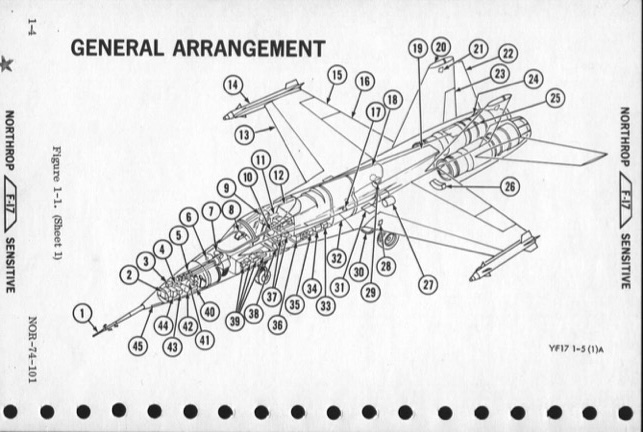
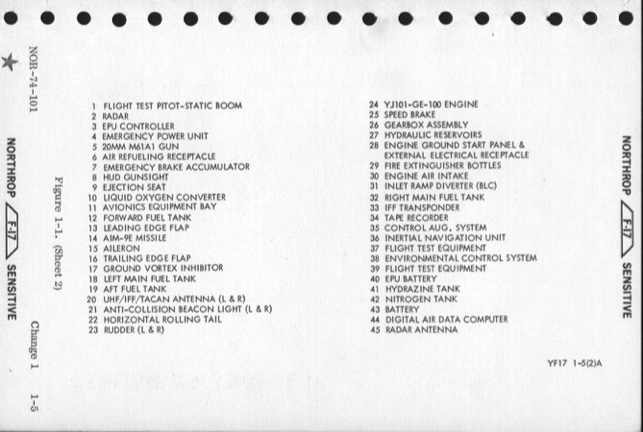
General arrangement (source: Northrop YF-17 Pilot’s Manual)
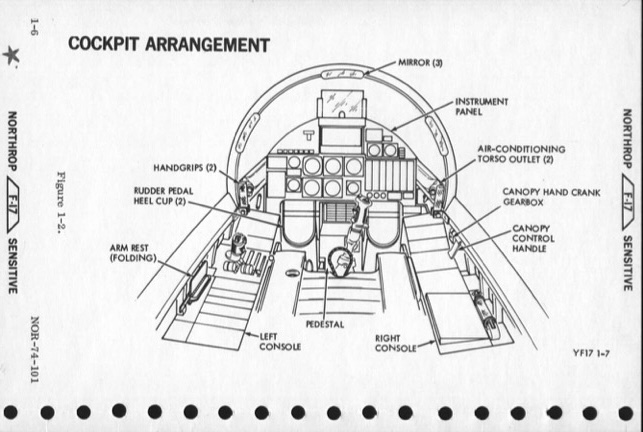
Cockpit arrangement (source: Northrop YF-17 Pilot’s Manual)
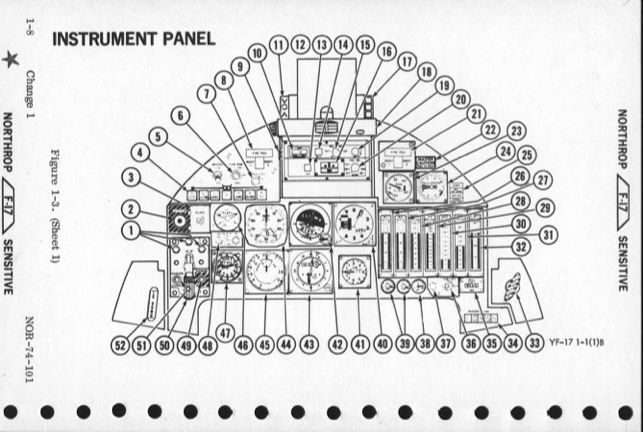
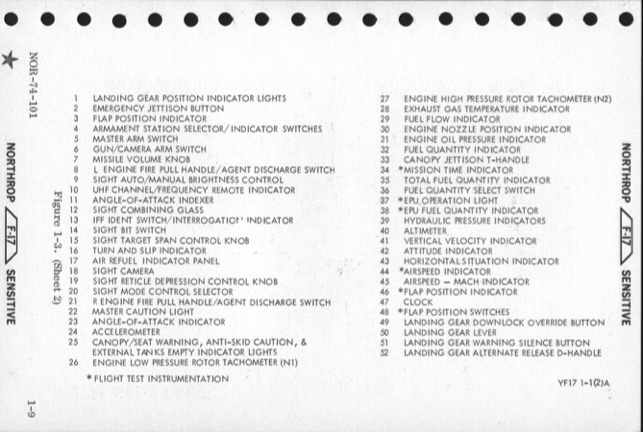
Instrument panel (source: Northrop YF-17 Pilot’s Manual)
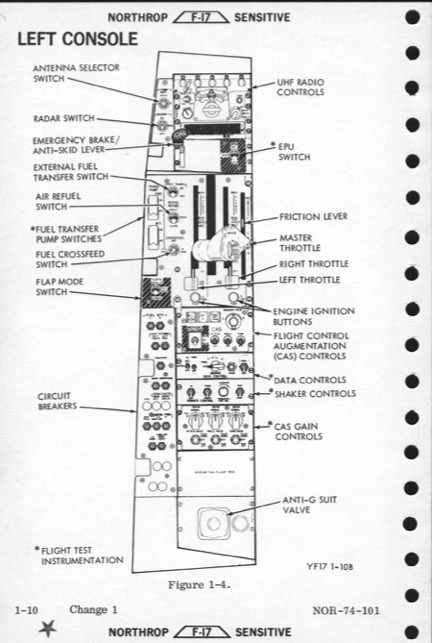
Left console (source: Northrop YF-17 Pilot’s Manual)
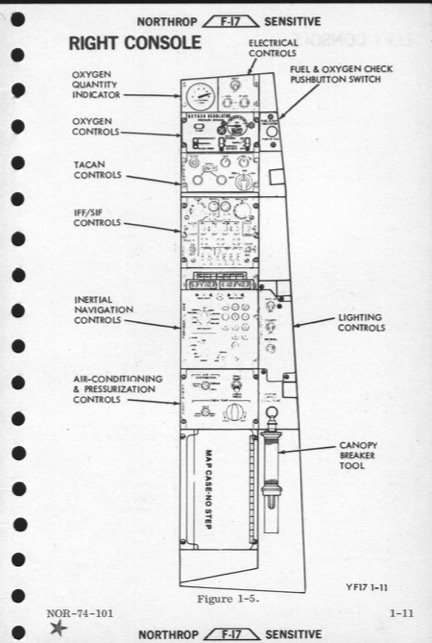
Right console (source: Northrop YF-17 Pilot’s Manual)
Aircraft operating envelope (source: DTIC ADB022460: YJ101-YF-17 Aircraft Prototype Development Summary)
Engine operating envelope (source: DTIC ADB022460: YJ101-YF-17 Aircraft Prototype Development Summary)
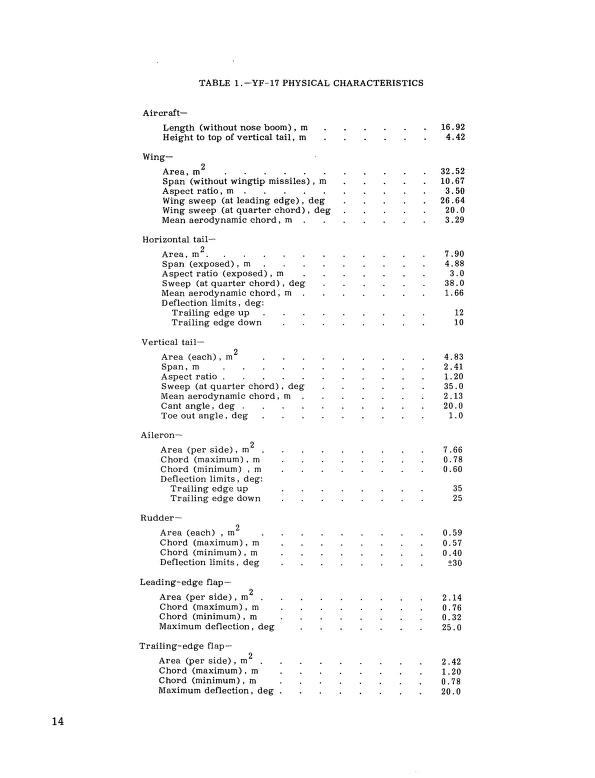
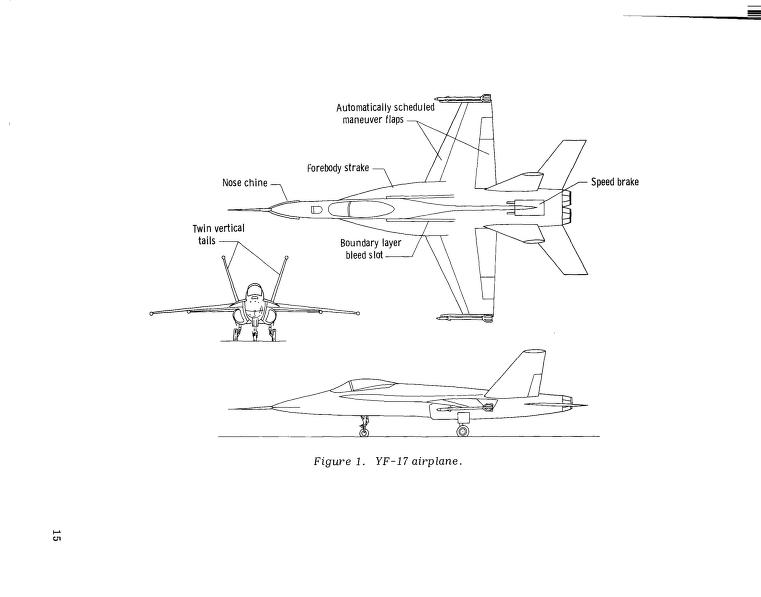
Detailed dimensions and diagram (source: NASA Technical Reports Server (NTRS) 19800014838: Precision controllability of the YF-17 airplane)
More pictures
Source: “Northrop: An Aeronautical History” by Fred Anderson
Source: “Northrop: An Aeronautical History” by Fred Anderson
Source: “Northrop: An Aeronautical History” by Fred Anderson
Selection from a gorgeous set of photos owned by Sundog at Secret Projects here: Northrop P-530 / P-600 / P-610 / YF-17 Design Evolution | Page 2 | Secret Projects Forum
Selection from a gorgeous set of photos owned by Sundog at Secret Projects here: Northrop P-530 / P-600 / P-610 / YF-17 Design Evolution | Page 2 | Secret Projects Forum
Selection from a gorgeous set of photos owned by Sundog at Secret Projects here: Northrop P-530 / P-600 / P-610 / YF-17 Design Evolution | Page 2 | Secret Projects Forum
Selection from a gorgeous set of photos owned by Sundog at Secret Projects here: Northrop P-530 / P-600 / P-610 / YF-17 Design Evolution | Page 2 | Secret Projects Forum
Sources
- “Northrop: An Aeronautical History” by Fred Anderson
- “Concept Aircraft: Prototypes, X-Planes, and Experimental Aircraft” edited by Jim Winchester
- “Northrop YF-17 Pilot’s Manual”
- “Legacy of the Lightweight Fighter Competition” by Erik Simonsen
- https://archive.org/details/janesfightingshi7475shar
- https://archive.org/details/DTIC_ADB022460
- NASA Technical Reports Server (NTRS) 19780014082: Low-speed aerodynamic characteristics of a 0.08-scale YF-17 airplane model at high angles of attack and sideslip : NASA Technical Reports Server (NTRS) : Free Download, Borrow, and Streaming : Internet Archive
- https://archive.org/details/NASA_NTRS_Archive_19800014838
- https://apps.dtic.mil/sti/tr/pdf/ADA061807.pdf
- https://apps.dtic.mil/sti/pdfs/ADA166724.pdf
- What Was The Northrop YF-17 Fighter Jet & Its Legacy?
- Northrop YF-17 - Wikipedia
